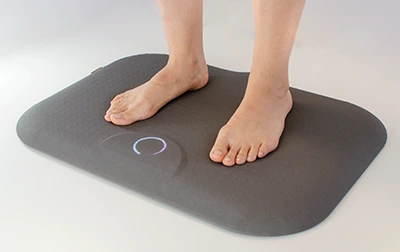
These are heady times for Podimetrics, a Massachusetts startup whose early-detection system for diabetic foot ulcers could save thousands of amputations every year. Its signature product, the SmartMat, recently earned FDA approval, and healthcare giants like Blue Cross and the Department of Veterans Affairs (VA) are lining up for partnership deals.
“Every four minutes in the US, a limb is amputated due to diabetes—and most are actually avoidable,” company CEO Jon Bloom said in a recent interview. A former anesthesiologist, Bloom was floored by the sheer volume of patients who came under his care for diabetic foot amputations. Determined to help those people live better and live longer, Bloom teamed up with researchers from Massachusetts Institute of Technology to develop a method for finding circulatory problems long before they become limb-threatening.
The SmartMat works by monitoring temperature and blood flow in the feet, flagging changes that suggest a foot ulcer may be forming. An early prototype of this technology correctly predicted 97 percent of diabetic foot ulcers up to five weeks before they became clinically observable. A larger clinical study in 2019 produced similar results.
Ease of use is a core part of the SmartMat’s success. All patients have to do is step on the mat for 20 seconds every day. The readings are then transmitted directly to their care providers, who monitor the data and decide when, and if, interventions are needed.
At present, the SmartMat is only available within the VA and the regional health networks that are trying the technology on a pilot basis. But the company is on a steep growth trajectory; Inc. magazine recently listed it as one of the 15 fastest-growing US firms in the health-products sector. And Bloom is deeply committed to making the SmartMat available to the people who need it the most.
“Today’s current healthcare system is still biased toward patients who already have good access to the right care,” he says. “It is becoming increasingly more important for business leaders and innovators to ensure their technology will impact all patients—not just those patients who already have solid access to high-quality care.”




